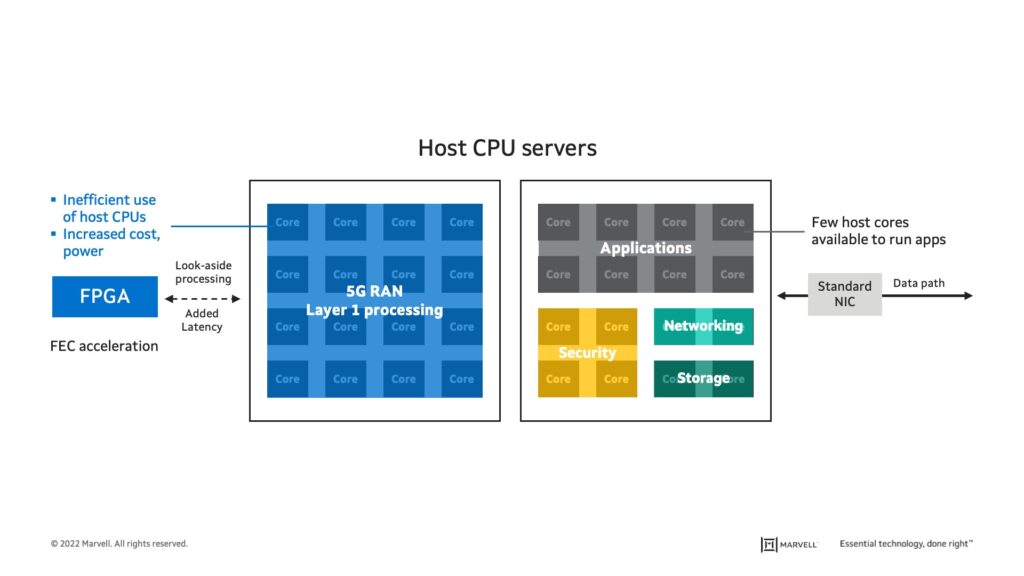- 製品
- 会社概要
- サポート
- 製品
- タイプ別
- 市場別
コンピューティング
ネットワーキング
ストレージ
カスタム
- 会社概要
Posts Tagged '5g Networks'
-
ウインドリバーとマーベル、CSP向け仮想化RANソリューションの拡充で協業
By Kim Markle, Director Influencer Relations, Marvell
Wind River and Marvell have collaborated to create an open, virtualized Radio Access Network (vRAN) solution for communication service providers (CSPs) that offers cloud scalability with the features, performance, and energy efficiency of established 5G networks. The collaboration integrates two complementary, industry-leading technologies—the Marvell® OCTEON® 10 Fusion 5G baseband processor and the Wind River Studio cloud software—to provide the carrier ecosystem a deployment-ready vRAN platform built on technologies that are widely proven in 5G networks and data centers.
CSPs aim to leverage established IT infrastructure for enhanced service agility and streamlined DevOps in the cloud-native RAN. Marvell's OCTEON 10 Fusion processor supports these goals with programmability based on open-source, industry-standard interfaces and integration with leading cloud software platforms such as Wind River Studio.
To ensure open-source distribution of Wind River Studio software, OCTEON 10 Fusion software drivers are being used by StarlingX, an open development and integration project. Marvell’s drivers enable Wind River Studio software to communicate with and control the OCTEON 10 Fusion processor. This facilitates developer access to an optimized vRAN system that offers new options for CSPs and helps to expand the carrier ecosystem of RAN and data center hardware and software suppliers, as well as system integrators.
-
妥協のない5GオープンRAN: コンピュート・アーキテクチャ
By Peter Carson, Senior Director Solutions Marketing, Marvell
はじめに
5G networks are evolving to a cloud-native architecture with Open RAN at the center. This explainer series is aimed at de-mystifying the challenges and complexity in scaling these emerging open and virtualized radio access networks. Let’s start with the compute architecture.
The Problem
Open RAN systems based on legacy compute architectures utilize an excessively high number of CPU cores and energy to support 5G Layer 1 (L1) and other data-centric processing, like security, networking and storage virtualization. As illustrated in the diagram below, this leaves very few host compute resources available for the tasks the server was originally designed to support. These systems typically offload a small subset of 5G L1 functions, such as forward error correction (FEC), from the host to an external FPGA-based accelerator but execute the processing offline. This kind of look-aside (offline) processing of time-critical L1 functions outside the data path adds latency that degrades system performance.

Image: Limitations of Open RAN systems based on general purpose processors
最新の記事
- HashiCorp and Marvell: Teaming Up for Multi-Cloud Security Management
- Cryptomathic and Marvell: Enhancing Crypto Agility for the Cloud
- The Big, Hidden Problem with Encryption and How to Solve It
- Self-Destructing Encryption Keys and Static and Dynamic Entropy in One Chip
- Dual Use IP: Shortening Government Development Cycles from Two Years to Six Months
アーカイブス
カテゴリ
- 5G (12)
- AI (11)
- 車載機器 (26)
- クラウド (7)
- コヒーレントDSP (2)
- 企業ニュース(100)
- カスタムシリコンソリューション (1)
- データセンター (39)
- データ処理ユニット (22)
- エンタープライズ (25)
- ESG (6)
- イーサネット・アダプター、コントローラー (12)
- イーサネット PHY (4)
- イーサネットスイッチ (30)
- ファイバーチャネル (10)
- Marvell Government Solutions (2)
- ネットワーク (31)
- Optical Modules (9)
- セキュリティ (3)
- Server Connectivity (15)
- SSD コントローラ (6)
- ストレージ (22)
- ストレージの推進者 (2)
- What Makes Marvell (20)
- Coherent DSP (3)
- 企業ニュース(3)
- Optical Module (3)
- PAM4 DSP (3)
- セキュリティ (3)
会社情報
リクルーティング情報
表示言語 (Language)
Copyright © 2024 Marvell, All Rights Reserved
- 利用規約
- プライバシーポリシー
- お問い合わせ先

